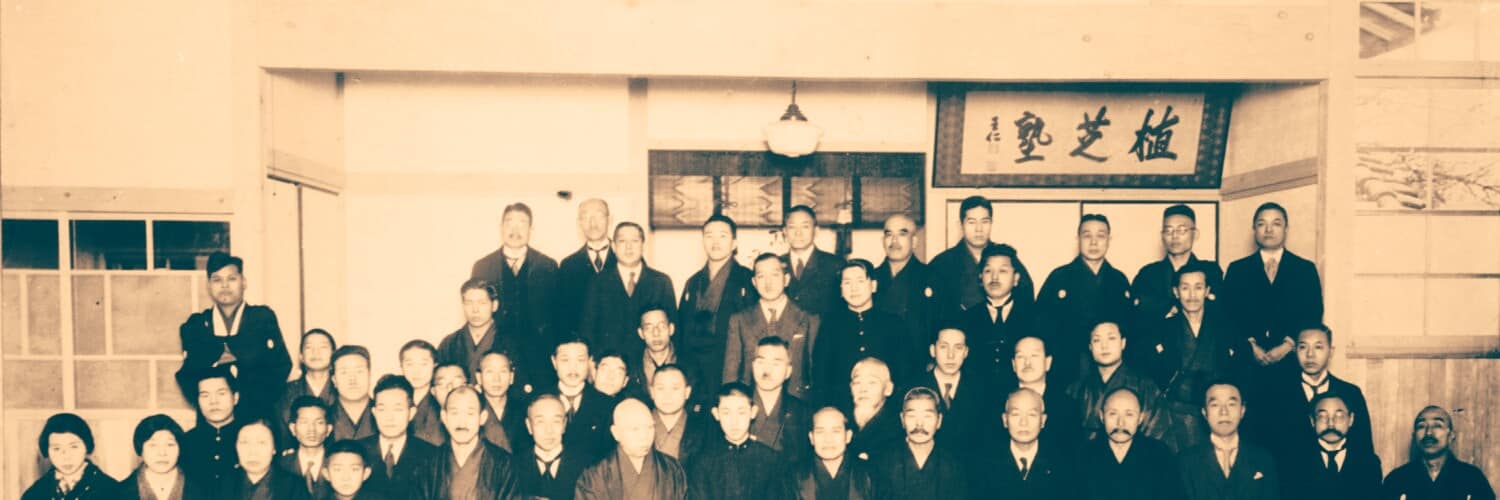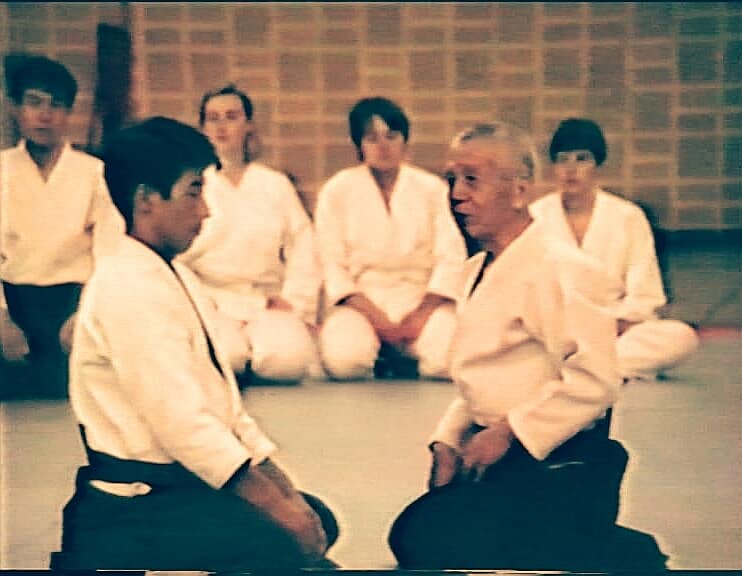Hisao Kamada was born in 1911 in Suhara near the city of Tanabe , in the prefecture of Wakayama. Son of a follower of the Omoto Kyo sect, Hisao was admitted to Master Ueshiba’s private dojo in Tokyo in 1929.
Ueshiba sensei then resided in the Shiba-Takanawa district, near the famous Sengaku-ji temple, which houses the burial of the legendary forty-seven “ronin” samurai. Morihei and his family live in a house rented by Commander Matsushita, retired from the Imperial Navy and close to Admiral Takeshita. The house is small and the training room is made up of eight tatami mats distributed in two rooms where the sliding doors have been removed to open a larger space.
The first months, Hisao, is not allowed to train but he has the right to sit in seiza and watch the practice. Between two lessons, the young boy is asked by the master to massage his shoulders and thus increase his strength.

Entrusted by his family to the Ueshiba, Hisao lives with them and Noriaki Inoue, nephew and first disciple of Morihei.
The influence of Admiral Takeshita attracts prestigious disciples to the Aiki-jujutsu of master Ueshiba. The dojo counts among its members nobles, civil servants and high-ranking officers of the navy and the imperial army.
After the practice, Kamada was given the responsibility of serving tea to the master, the officers and the students. He must also clean the dojo after training is over.
Hisao also accompanies Ueshiba sensei in his travels, notably to the sugar company of Shiomizuko, to the naval school where he teaches with the guards of the imperial palace and in Kojunsha.
Takeshi Nishimi, fifth dan in Judo, Gunichi Oshikawa, employee of the national railways and Kikuo Kaneko, student of foreign languages at Gaigo University are among the first students of the dojo.
To be continued
Source: Facebook/Aikido



